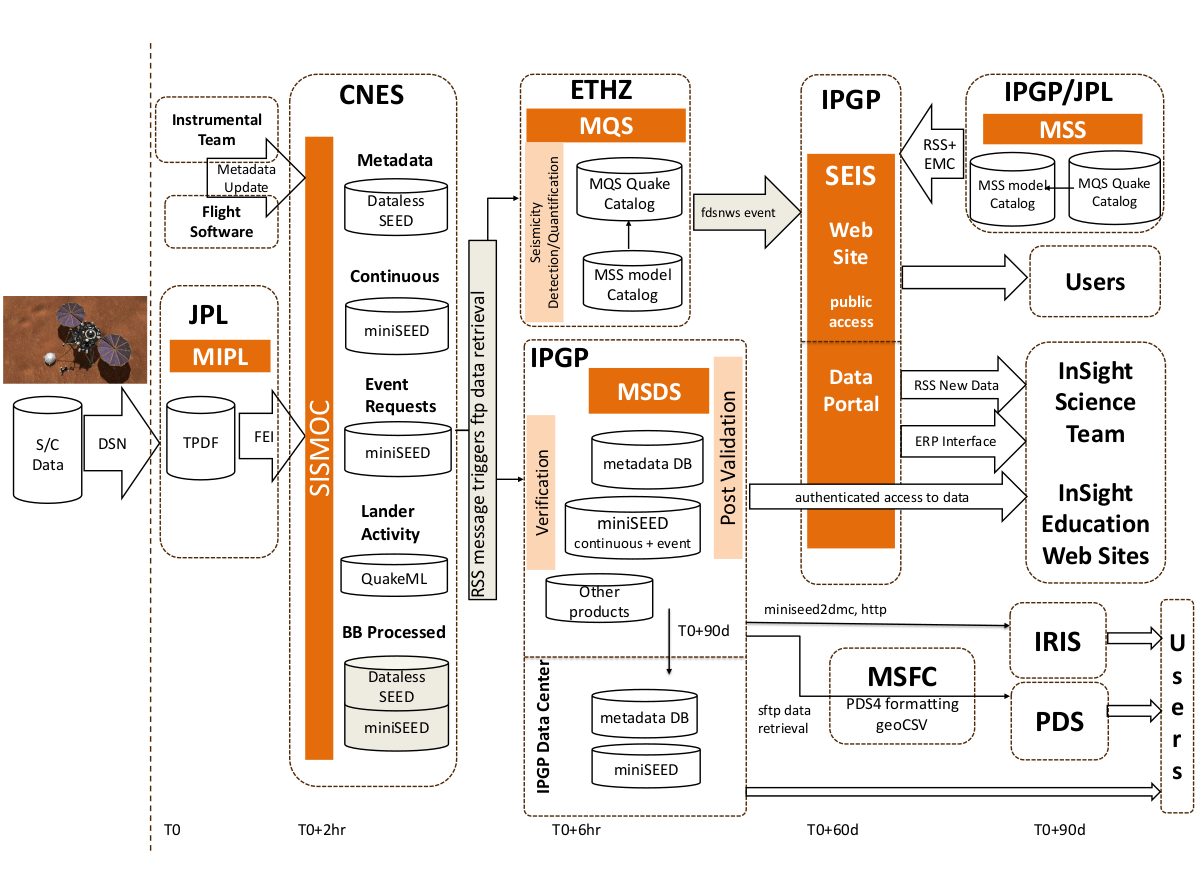The SEIS Data
Data description
The six sensors of SEIS (SEIS: Insight’s Seismic Experiment for Internal Structure of Mars - Lognonné and al. (2019) Space Science Review 215:12) cover a broad range of the seismic bandwidth, from 0.01 Hz to 50 Hz, with possible extension to longer periods. Data are transmitted in the form of three continuous VBB components at 2 sample per second (sps), an estimation of the short period energy content from the SP at 1sps, and a continuous compound VBB/SP vertical axis at 10 sps. The continuous streams are augmented by requested event data with sample rates from 20 to 100 sps.
SEIS data products are downlinked from the spacecraft in raw CCSDS packets and converted to both the Standard for the Exchange of Earthquake Data (SEED) format files and ASCII tables (GeoCSV) for analysis and archiving. Metadata are available in dataless SEED and StationXML. Time series data (waveforms) are available in miniseed and GeoCSV. Data are distributed according FDSN formats and interfaces.
Wind, pressure, and temperature data from the Auxiliary Payload Sensor Suite (APSS) will also be available in SEED format, and can be used for decorrelation and diagnostic purposes on SEIS.
The SEIS Data in SEED format
The temporary FDSN Network Code XB has been reserved for the InSight Mission, from 2016 to 2023.
The following table summarizes the instruments codes used for SEIS Data as defined by the SEED standard.
| Instrument | Intrument Code |
| High Gain Seismometer | H |
| Low Gain Seismometer | L |
| Mass Position Seismometer | M |
| Short Period Seismometer | H |
| Pressure | D |
| Magnetometer | F |
| Temperature | K |
| Wind | W |
| Synthetized beam data | Z |
| Non-specific instruments | Y |
For detailed description of channels available in SEIS data, take a look at station and channel naming convention.
Since the begining of 2021, the LOBT (Local On-Board Time) is being included in the header of each miniseed record using the blockette 500 (Timing). At the end of the Mission, the LOBT will be included in all SEIS data.
For more information about the blockette 500 (Timing) and SEIS LOBT:
- Implementation of SEIS Data in mini-SEED format by SISMOC (pdf)
- SEED manual, Chapter 8 - Data Records : [500] Timing Blockette (pdf)
The SEIS Data Flow






